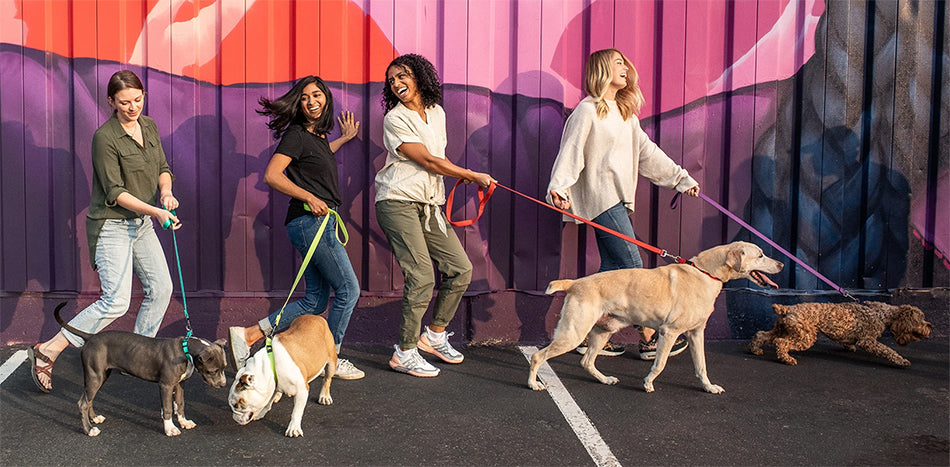Your cart is empty. Let's fix that!


There’s nothing quite like the excitement of bringing a new puppy into your home. After you’ve prepared for their arrival, you can enjoy watching them grow and develop into adult dogs! When you adopt a puppy, you’re never quite sure how big they will grow into their adult size, especially if you adopt a mixed breed. However, one thing never changes - the need for a high quality natural dog food.
Stages of Puppy Growth
While many people believe that a puppy stops growing by the time they are one year old, this simply isn’t the case across the board. Stages of puppy growth vary by breed and there is no “one size fits all” puppy growth chart. The majority of breeds will become fully grown between 12-18 months, although the largest breeds can take longer. This is because larger breeds require a bit more time for their bones and joints to fully develop. Healthy growth is the result of many things, like training, exercise, and of course a good natural dog food.
Puppies will experience the fastest growth rate in their first six months, and most puppies will have reached 60% of their adult height by the time they are four months old. They experience skeletal growth first, and when this stage is complete your dog will stop getting bigger. Then, your pup will fill out and continue to develop muscle and fat over time, just like humans!
Keep in mind that puppy growth involves both their minds and their bodies, and they are not exactly the same. It takes time for puppies to mature and start behaving like adults even if they appear fully grown. For example, Border Collies and other herding dogs don’t mature and stop behaving like puppies until they reach about 2 years old.
A good way to determine when your puppy has become an adult is to pay attention to their behavior. One of the worst growing pains of raising a puppy is the biting stage, but this guide can help your fur baby kick that habit for good! When they stop their immature, hyperactive, or destructive behavior, it’s a safe bet that adulthood isn’t too far off.
It’s important to feed your pup the appropriate type and quantity of food during each stage of their life, this handy guide can help. A quality, natural dog food can help your pup grow up to be heatlhy, happy and strong! If your four-legged child isn’t as enthusiastic about food as you’d like, try adding our food toppers to entice them to eat up.
Small breed puppies, known for their rapid growth, typically reach their full grown size between six and eight months old. During this crucial growth phase, it's important to provide them with the best dog food for small dogs, designed to meet their unique nutritional needs.
By the time they reach 12 months old, these puppies usually fill out to their healthy average weight, having benefitted from a diet tailored to support their development.
Small breeds include:
Medium breeds include:
Generally, the larger the breed, the slower their growing process. During this extended growth phase, feeding them with specially formulated large breed food is essential to support their development and ensure proper bone health. Most large puppies won't reach their full-sized frame until 15-18 months old and won’t fill out into their full adult weight until they're about two years old.
Large breeds include:
These big babies take the longest to reach full size. Their basic framework is in place by about 18 months old, but it can take until age two or three for them to reach their heavy full weight and muscle mass. As you may have guessed, it’s essential to provide your pup with a healthy, natural dog food to ensure they receive the proper amount of nutrients.
Giant breeds include:
In wrapping up this guide on puppy growth, it's important to remember that the journey to adulthood varies greatly among breeds. How long a dog takes to reach full size, and how fast puppies grow, are questions with breed-specific answers.
If you have specific questions or concerns regarding your pet’s growth and health, make sure to consult your vet. Whether you're raising a tiny Chihuahua or a majestic Mastiff, providing the appropriate nutrition with natural dog food tailored to their growth needs is key to nurturing a healthy, happy adult dog
Updated January 3, 2024